Listening to the tidal wave in “Giant Peach,” the riotous “Moaning Lisa Smile,” or the punked-up “Play the Greatest Hits,” it’s hard to imagine Wolf Alice as an acoustic duo. Then talk to Joff Oddie about his integral use of effects—“These pedals can do such crazy things; to not do crazy things with things that can do crazy things seems odd”—and the band’s origin story becomes even more improbable. But it’s true: Wolf Alice started with guitarist/singer Ellie Rowsell and guitarist Oddie playing acoustic-folk music during open-mic nights in North London pubs.
After self-releasing an EP, they expanded and electrified their sound with the help of Theo Ellis (bass/synths) and Joel Amey (drums/synths). Now sure, plenty of the band’s repertoire from their four official releases stays in the quieter, softer settings—creating maximum drama—but Joff and the gang give some animation to nearly every note played. (To give further cred to the group’s juxtaposition of floating like a butterfly and stinging like a bee, in a 2015 PG interview Oddie cited John Fahey and Sonic Youth as two of his biggest influences.)
“On Blue Weekend, we leaned into our past quite a bit, where we layered up sounds with acoustic instruments. We used loads of 12-strings, banjos, resonators, and tenor guitars,” Oddie says about the band’s recent release. “We’re even performing an acoustic fingerstyle number—‘Safe From Heartbreak (if you never fall in love)’—each night, so it’s nice to get back there.”
Before Wolf Alice’s sold-out show at Nashville’s Cannery Ballroom, guitarist Oddie shared an hour with PG’s Chris Kies. The resulting conversation covered the cathartic process of building his first guitar during lockdown (a Jaguar-Jazzmaster hybrid) and why he switched to a pair of Fenders that are “a big sheet of paper that you can paint on.” Plus, he illustrates how every moment in a Wolf Alice set has a pedal, and those moments are unique and not repeated.
Brought to you by D’Addario 360 Rechargeable Tuner.
The Joffcaster
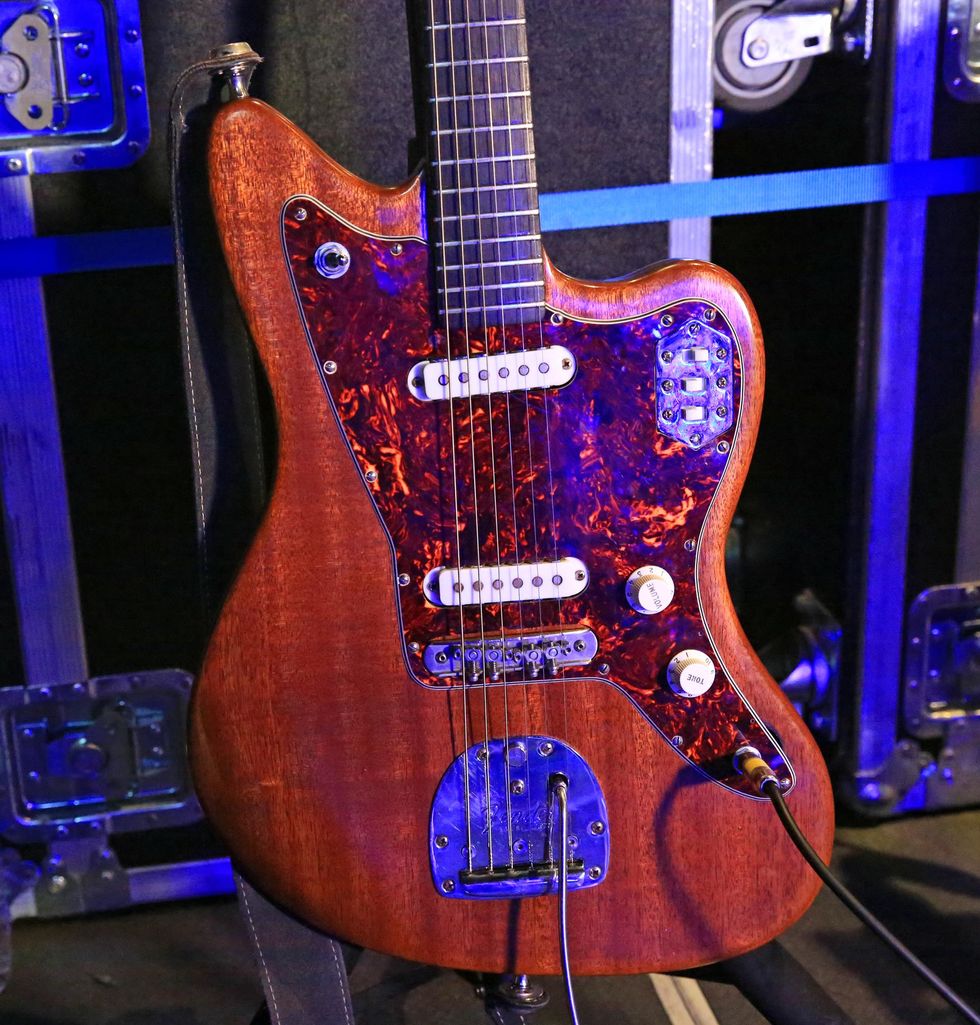
After wrapping work on the band’s third full-length album, 2021’s Blue Weekend, Wolf Alice guitarist Joff Oddie had a wide-open calendar. The ongoing pandemic lockdowns and restrictions finally provided him the time he’d need build his dream machine. He dusted off the blank of mahogany under his bed and ordered some crude hand tools. He cut, carved, and contoured the Jazzmaster-y body (a shade bigger than Joff’s old No. 1 Jaguars) to his specs and stance. Originally, he was going to slap a parts neck and fretboard on his homemade body, but rolling with the momentum and confidence, he ordered more wood (torrefied flame maple for the neck and rosewood for the fretboard). To help with the Jag’s slinky 24"-scale length and make it easier to play the higher frets (especially for the chords in “Delicious Things”), Joff extended his guitar’s scale length to 24.75". And the neck profile is insanely thin (as in “Ibanez RG” shredder slim).
The rest of its bits are standard for an offset—a Fender Vintage-Style Floating Tremolo, a Mastery bridge, and simplified switching—while it growls with a set of Lollar Jaguars. All of his guitars take Ernie Ball Skinny Top Heavy Bottoms (.010–.052) and he stings the strings with Dunlop Nylon Standard 1.0 mm picks.
“Plinky Plunky”
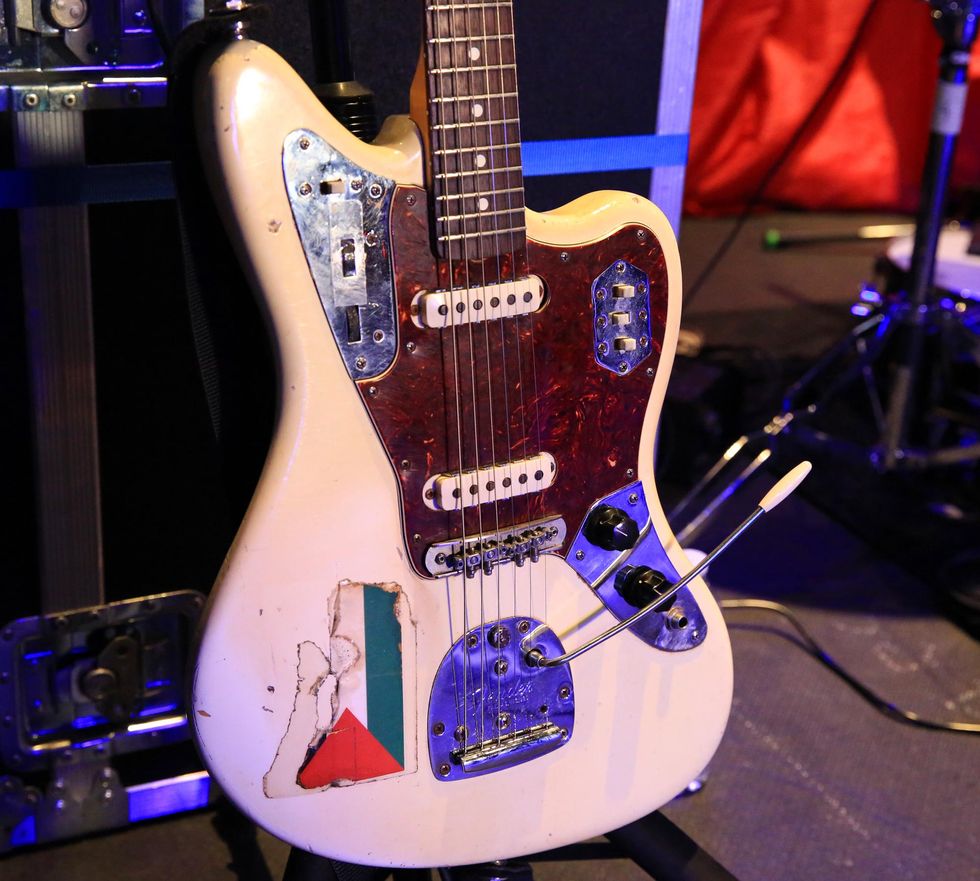
For most of the 10-plus years Wolf Alice has been electric, this 1962 Fender Jaguar reissue has been Oddie’s main guitar. He bought it completely clean, with student loan money, in Wood Green, London, off Gumtree (the U.K.’s equivalent to Craigslist) when he and fellow co-founder Ellie Roswell decided to amplify their music. “I don’t know why I bought it, to be honest. I remember seeing a Jaguar in a guitar shop when I was a kid and thinking, ‘that’s an ugly-looking guitar,’” he confesses. “I had started listening to Sonic Youth, Dinosaur Jr., and My Bloody Valentine in late my teens and early 20s, but I think I got it wrong, because they all play Jazzmasters [laughs]. I eventually fell in love with the eccentricities of the Jag.”
Years back, this worn-down jangle machine was upgraded with Lollar Jaguar pickups and an M1 Mastery bridge, and it has maintained that pedigree ever since. “Since putting a bit longer scale length on my build, giving it more resonance, I’ve noticed how the Jag’s shorter scale can have a deader, plinky-plunky sound,” admits Oddie. “For years I overcompensated the rest of my setup with my amps (bass on 10) and utilizing specific pedals to increase the Jag’s sustain.”
This one tends to appreciate distortion, gain, and fuzz, so Joff will strap it on for the heavier, more rocking songs like “Moaning Lisa Smile” or “Giant Peach.”
Sustainer Strat
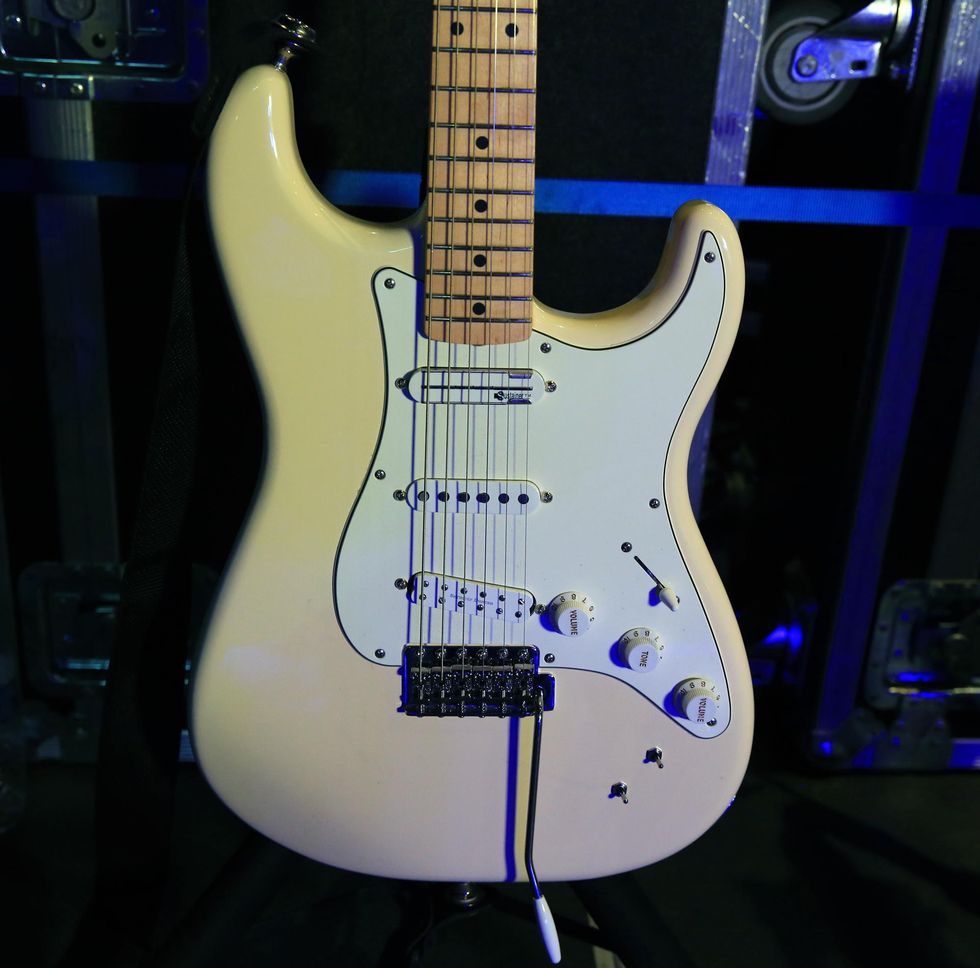
“I’m not using this guitar to its full potential right now,” concedes Oddie. “I’m just scratching the surface and just using it as a Strat, but I did request it from Fender because it has the special stuff.” The Fender EOB Sustainer Stratocaster was co-designed by Radiohead’s Ed O’Brien and his longtime tech (and Oddie’s current tech) Adam Cummings. It’s still stock and features the unique setup of a Seymour Duncan JB Jr. humbucker (bridge), a Texas Special single-coil (middle), and a Fernandes Sustainer (neck). It has a “really lovely clean sound,” so Joff uses this for the band’s softer songs, like “Lipstick on the Glass.”
Jangling with Johnny
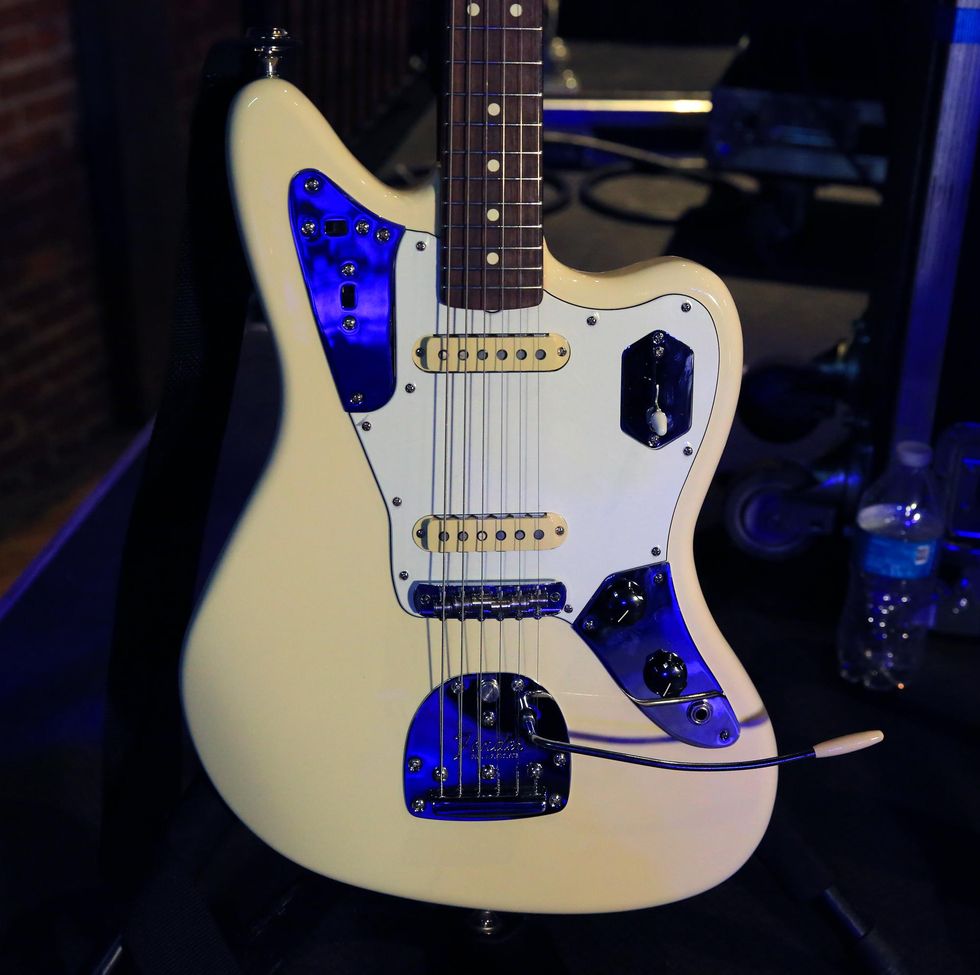
“We’ve only just begun.” Oddie quotes the Carpenters when referring to this pristine Fender Johnny Marr Jaguar that sees stage time for Blue Weekend’s dreamy-pop number “How Can I Make It Ok?” He notes during the Rundown that the Bare Knuckle Johnny Marr single-coils give the guitar a “paddier, ’80s sound” and that “it’s one of the best guitars being made at the moment. It’s something really special.”
Picking the P
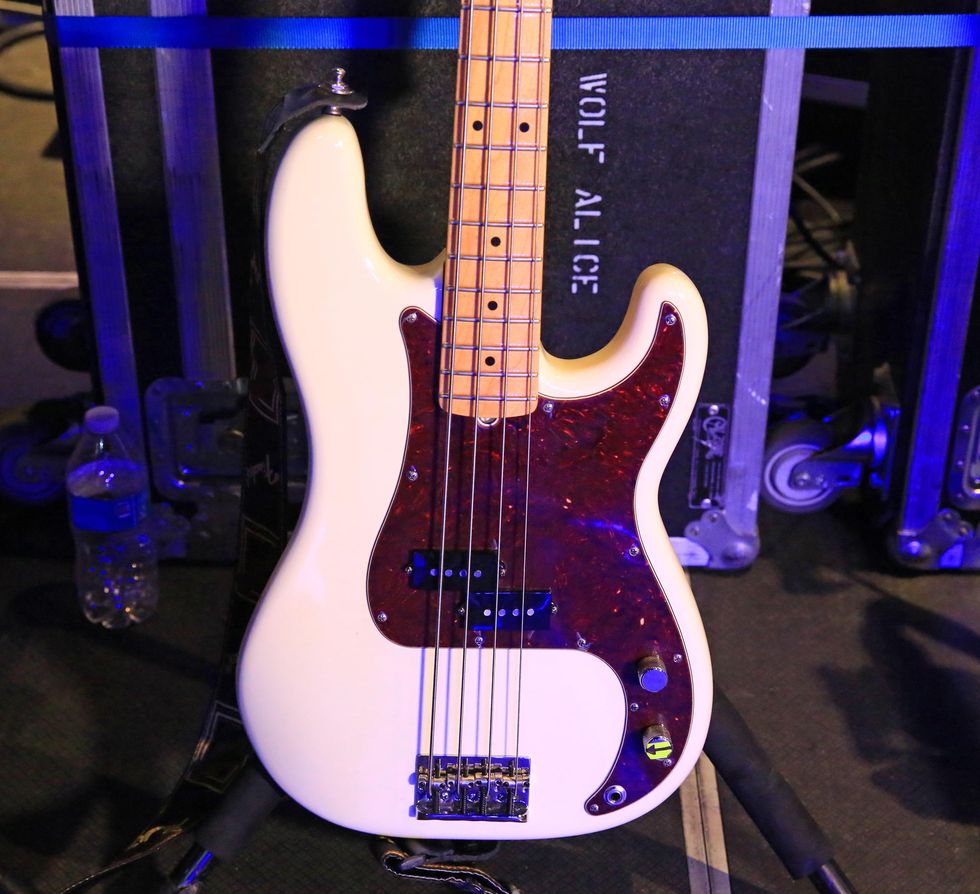
For Blue Weekend’s “No Hard Feelings,” Joff will put on this Fender American Professional II Precision Bass and pick out chords far up the neck while bassist Theo Ellis plays on a Roland RD-2000 Stage Piano.
Double Your Pleasure. Double Your Fun.
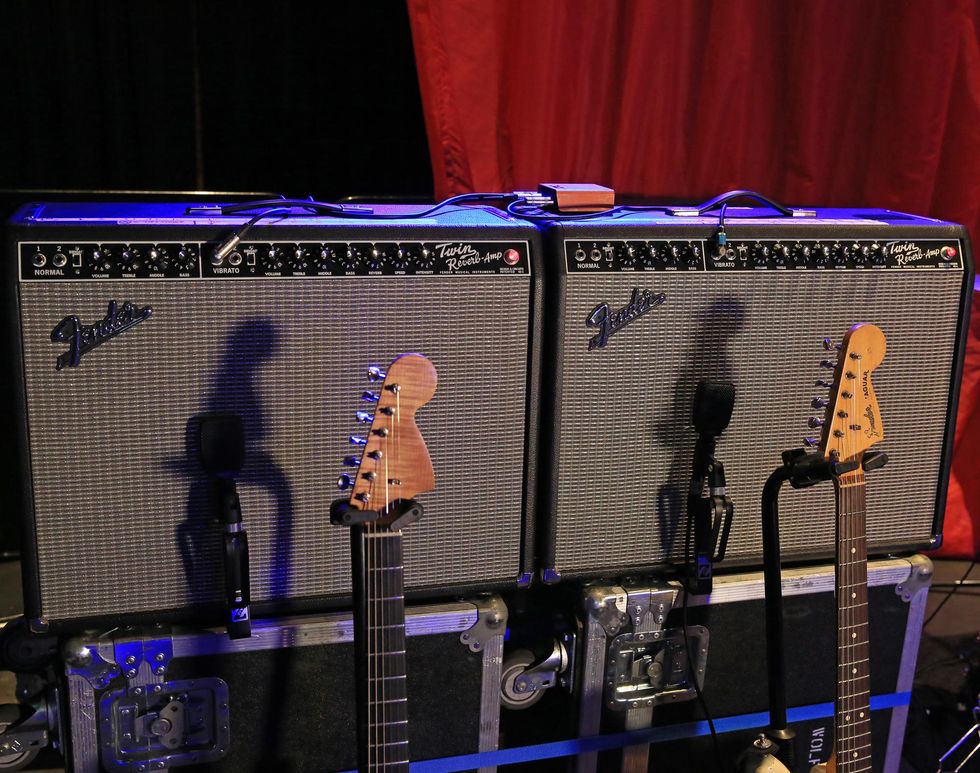
Joff once toured with a Fender Hot Rod Deluxe III and a handwired Vox AC30HW2. Shortly after their first album, My Love Is Cool, Joff started to require more volume and less color. “For me, the Twin’s blank canvas—huge amounts of headroom with big, clean sounds—is a big sheet of paper that you can paint on.” These Fender ’65 Twin Reverb reissues are both on and are set in a double-mono platform. For European tours, he’ll sub out one of the Twin reissues for a proper ’70s silver-panel Twin Reverb.
Joff’s “Death Star”—Home to Oddities and Curiosities
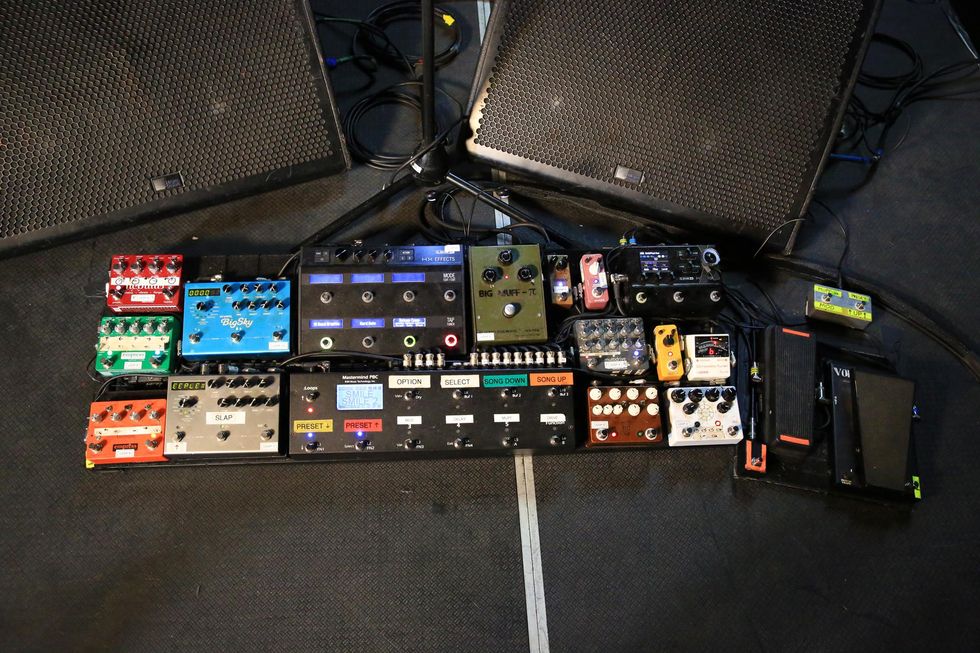
“As ridiculous as this sounds, the concept of this board was to get as much functionality out of something that can also get on a plane,” says Oddie. “It also needed to be on the floor, because I’m not interested in having them in a rack offstage. I’m a control freak and I like to see what’s going on.” Let’s dive into this FAA-regulated pedalboard built by Matt Tag aka the Guitar Butler. Everything starts by going into the RJM Music Mastermind PBC, where Joff has meticulously mapped several presets for every song in Wolf Alice’s nightly setlist. Oddie employs a six-pack of complicated, deep workstations from Strymon (BigSky and TimeLine) and Empress (Nebulus, Phaser, Tremolo2, and Multidrive). Even broader sounds and tone splicing happen with Joff’s pair of digital power plants from Line 6 (HX Effects and HX Stomp). The lower right corner has a deuce of dirts (JHS Sweat Tea V3 and Analog Man King of Tone). And a heralded green giant (Electro-Harmonix Russian Big Muff) and trio of tiny tone teakers (Wampler Tumnus, Mooer Tender Octaver, and Mooer Yellow Comp) round things out on Joff’s main board. An auxiliary board to the side houses a Dunlop Cry Baby Wah and a Morley PVO+ optical Volume Plus.
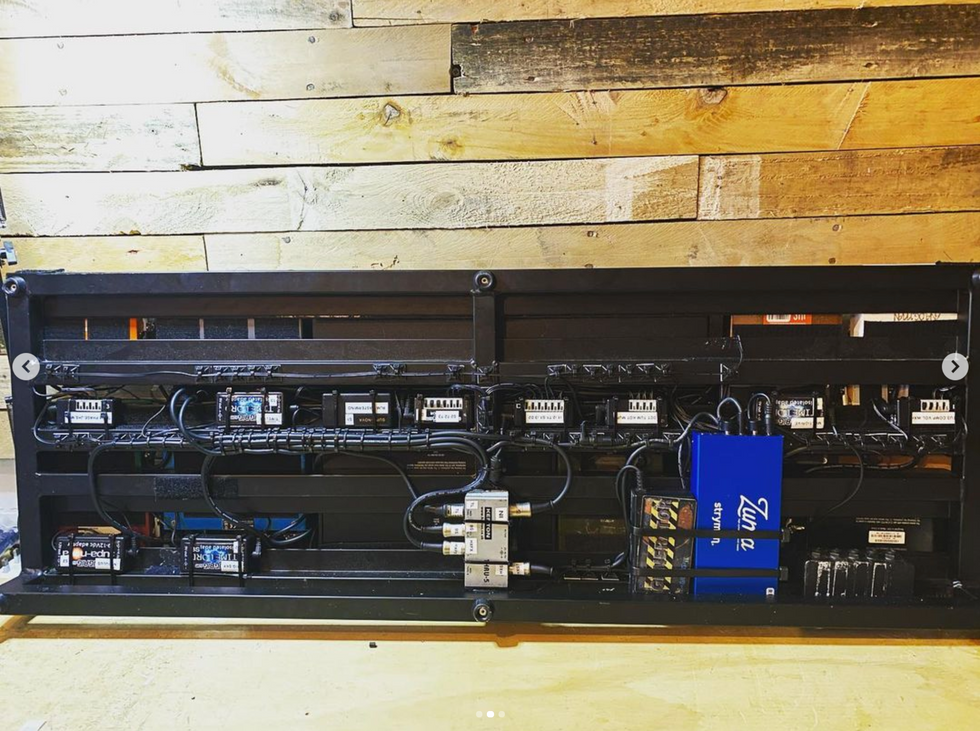
Underneath the hood there are various power supplies from GigRig (Generators, Isolators, and high-current Timelords and Supanovas) and a Strymon Zuma.







![Rig Rundown: Russian Circles’ Mike Sullivan [2025]](https://www.premierguitar.com/media-library/youtube.jpg?id=62303631&width=1245&height=700&quality=70&coordinates=0%2C0%2C0%2C0)

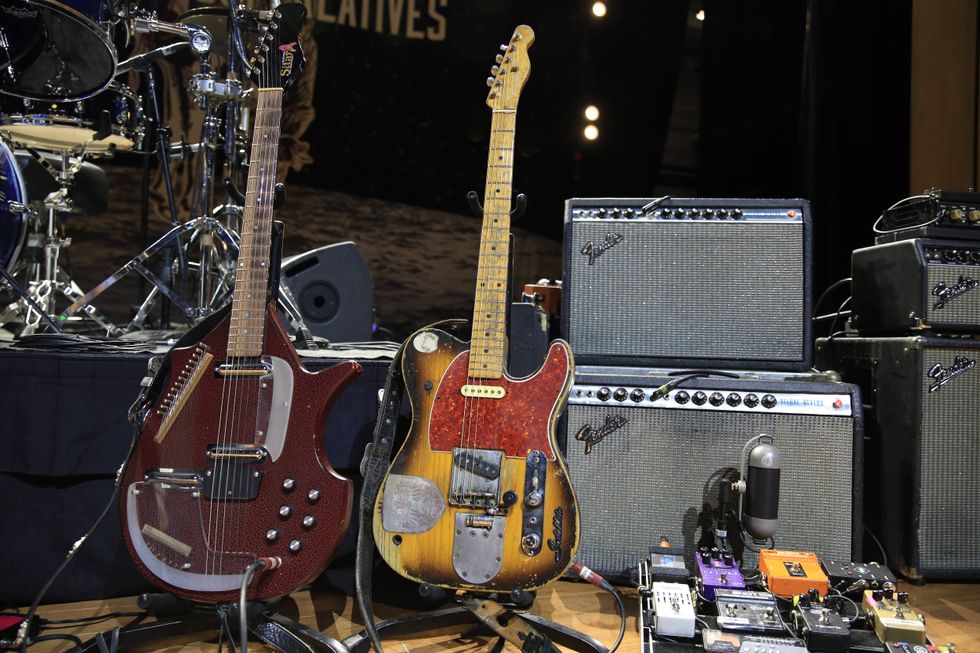
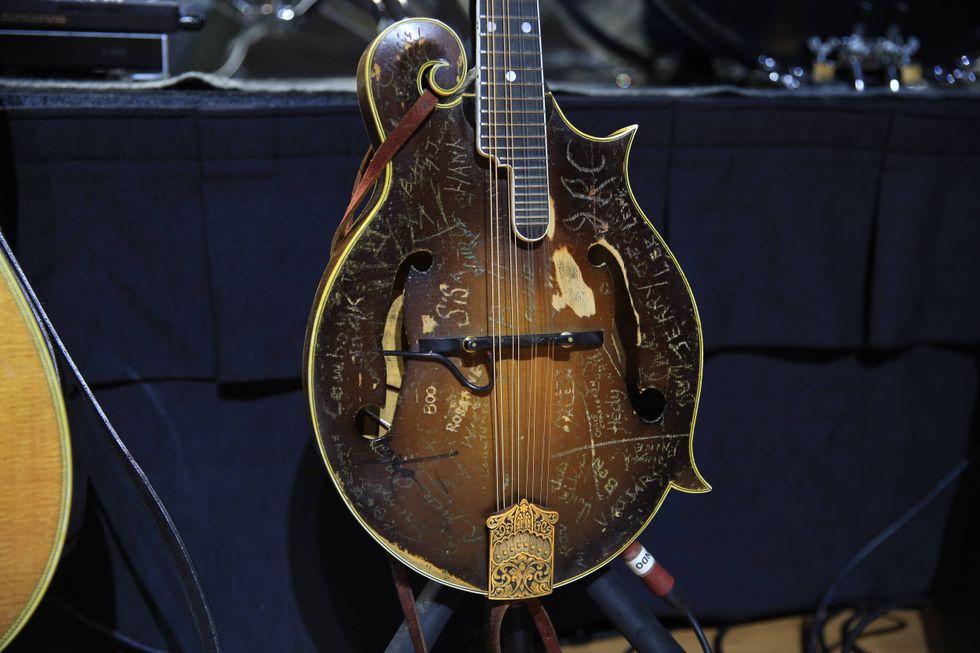
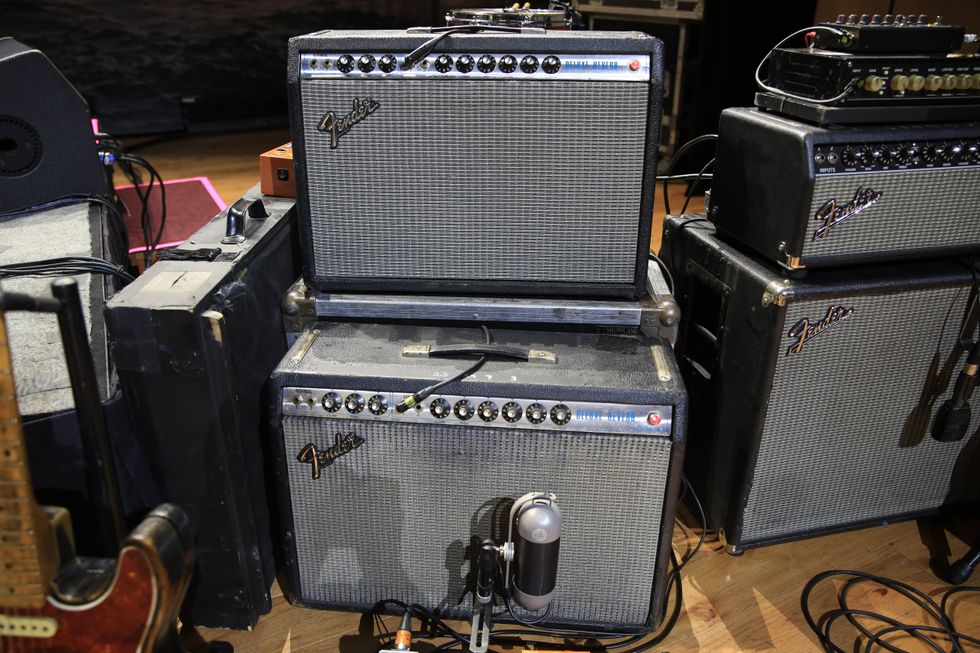
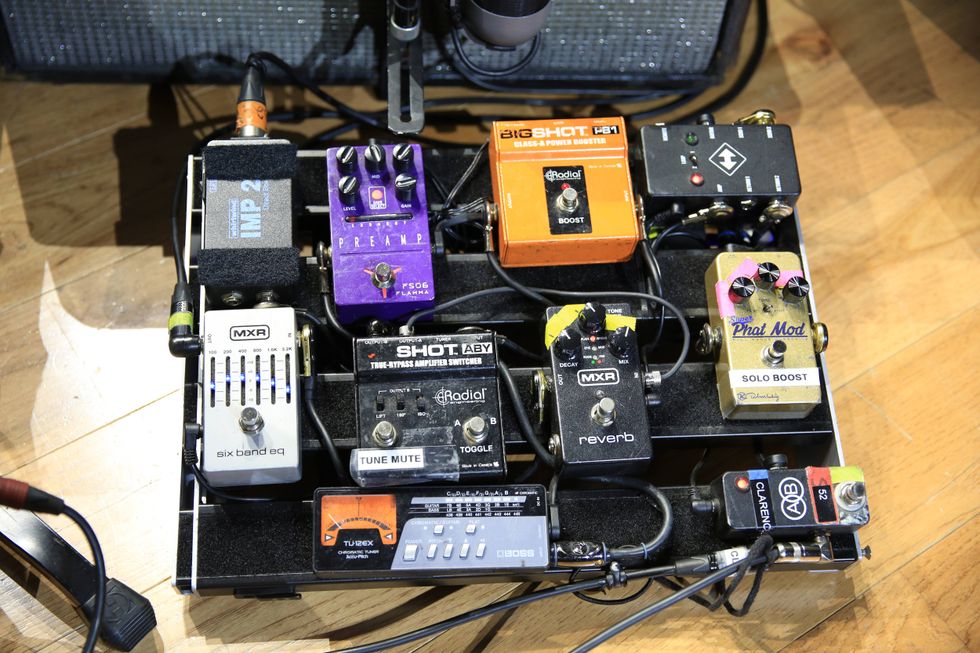
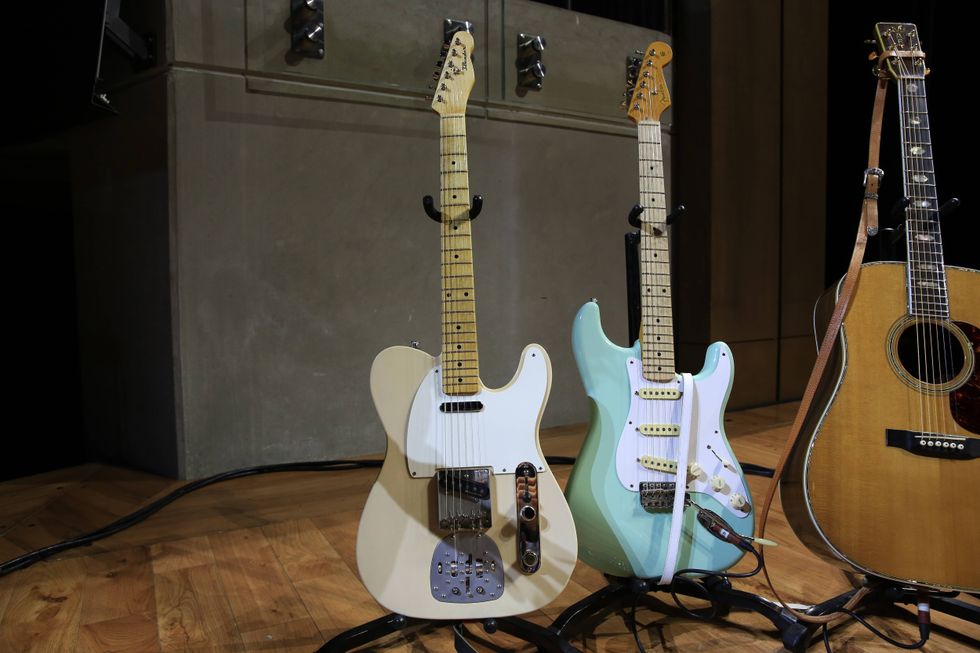
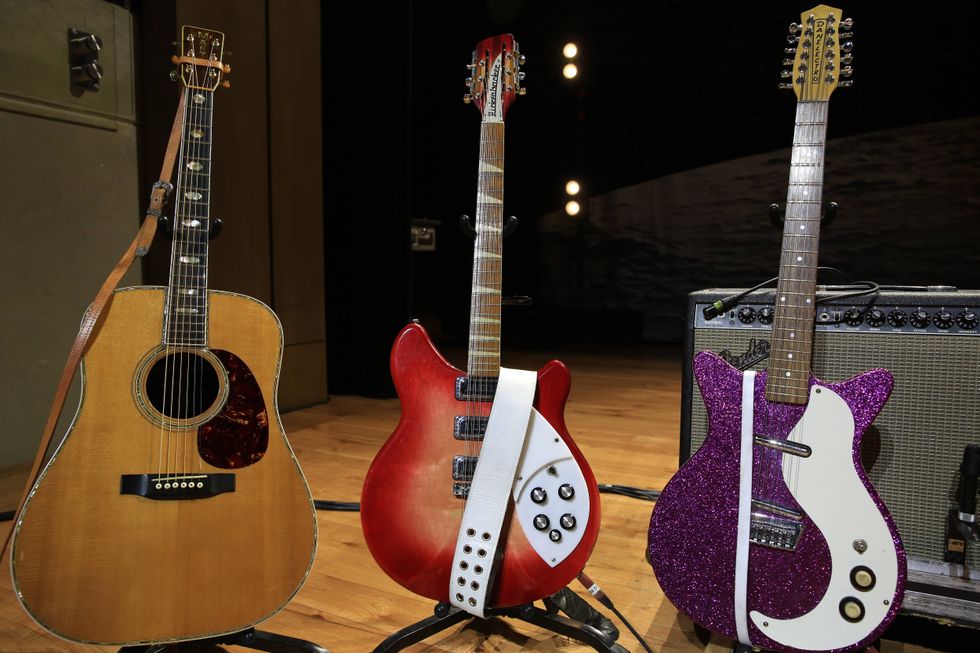
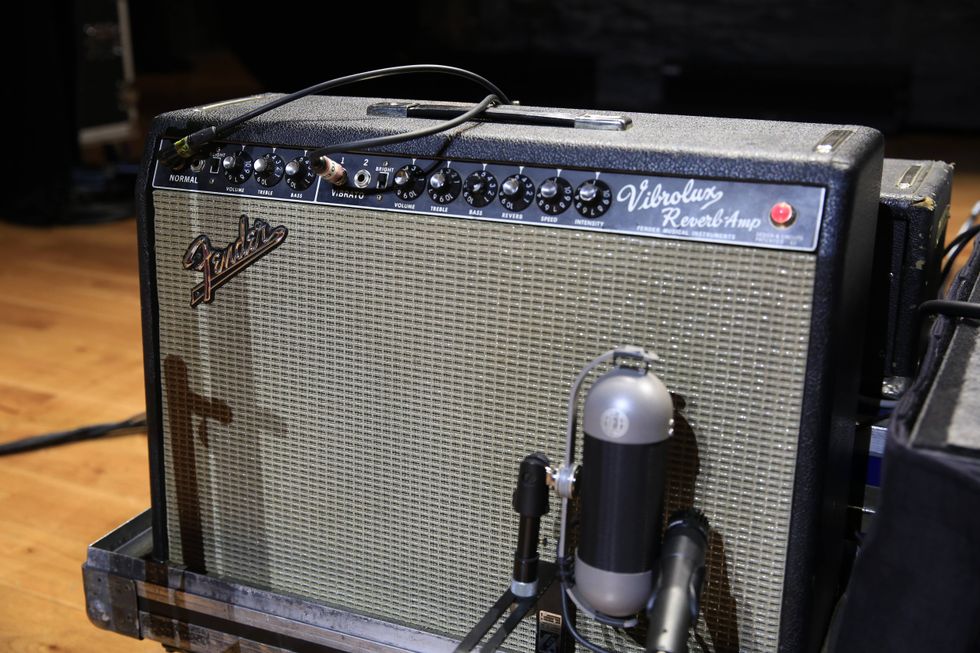
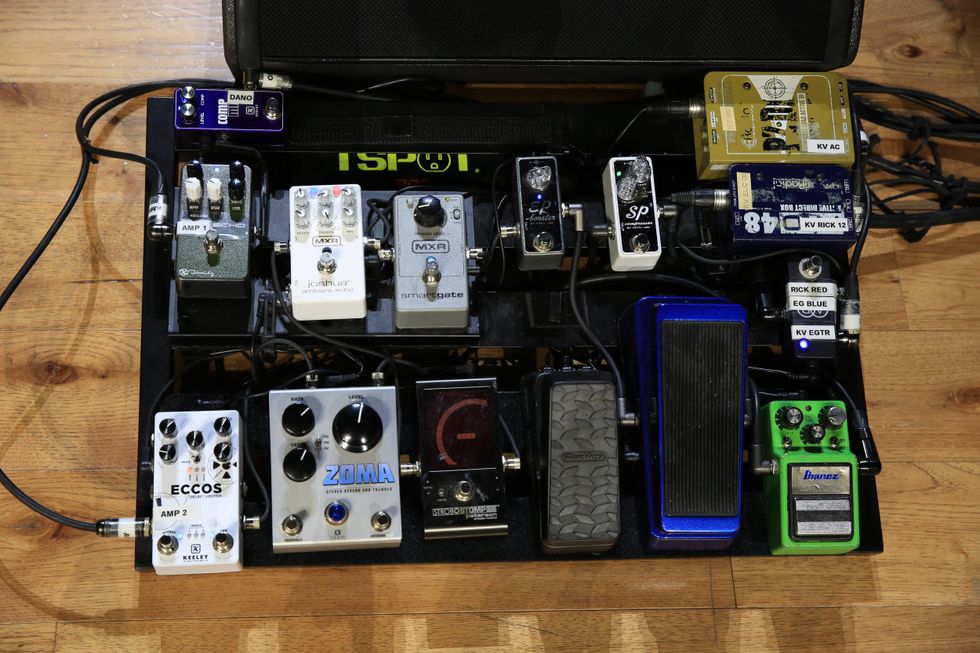





![Rig Rundown: AFI [2025]](https://www.premierguitar.com/media-library/youtube.jpg?id=62064741&width=1245&height=700&quality=70&coordinates=0%2C0%2C0%2C0)





















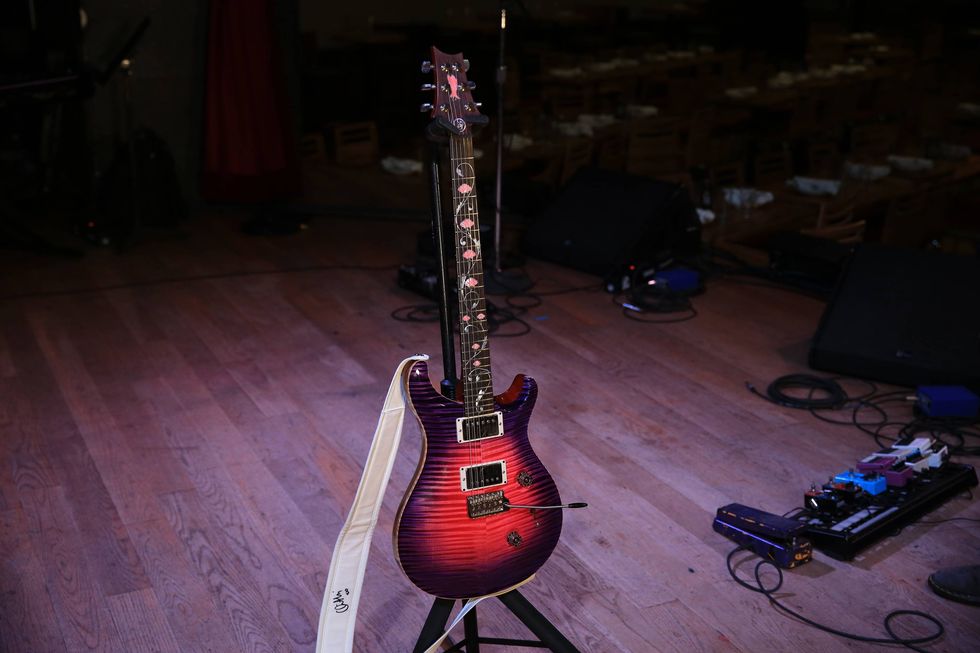
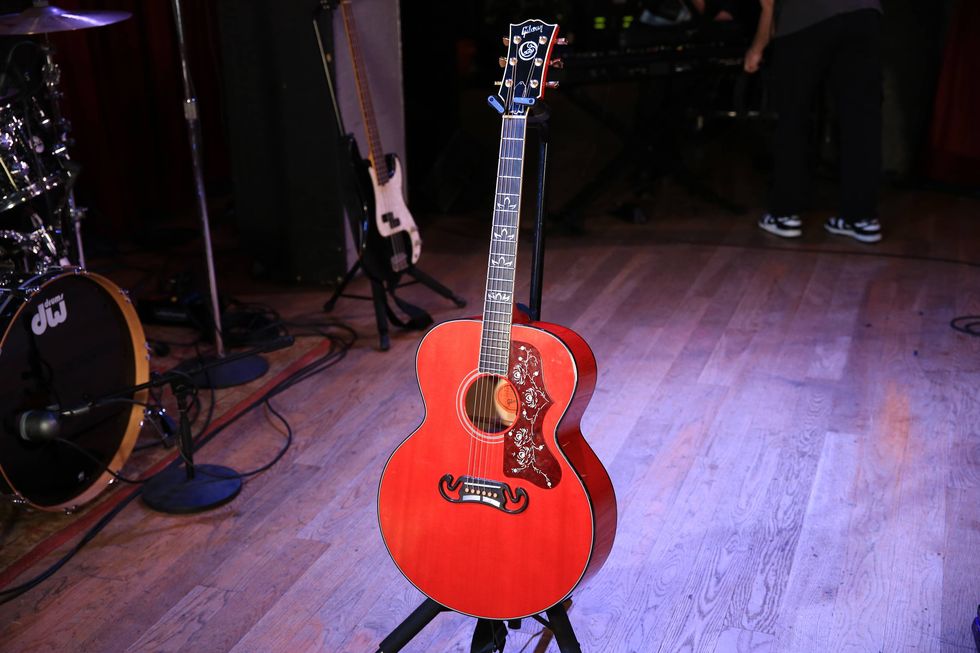
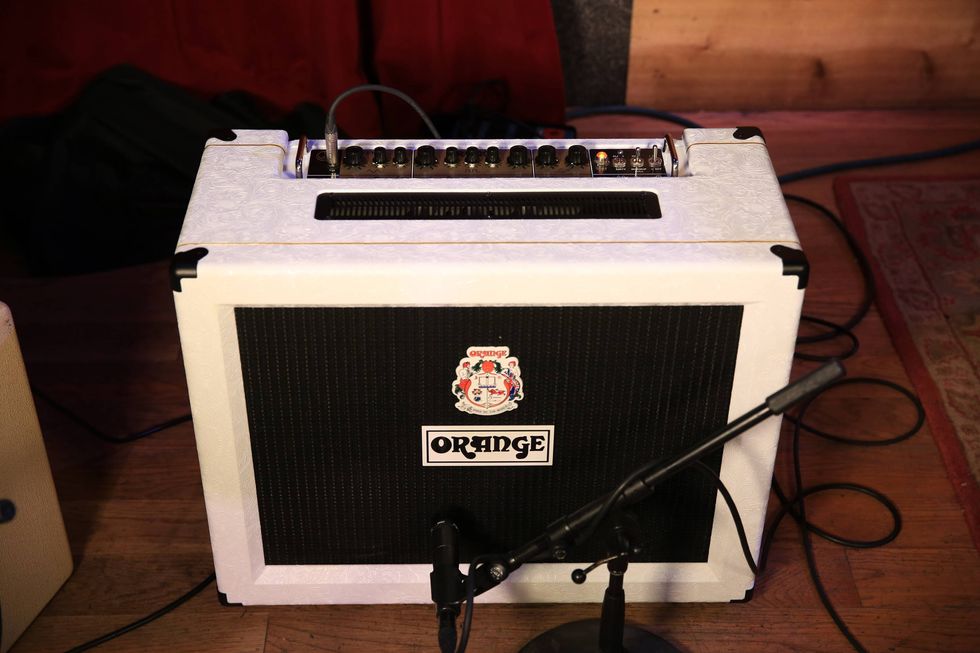
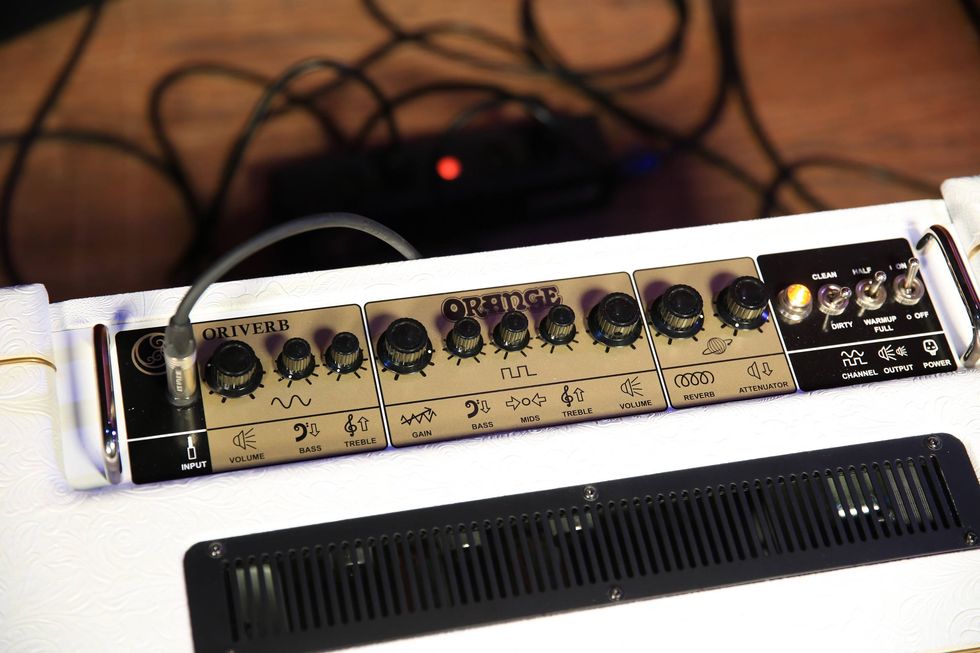
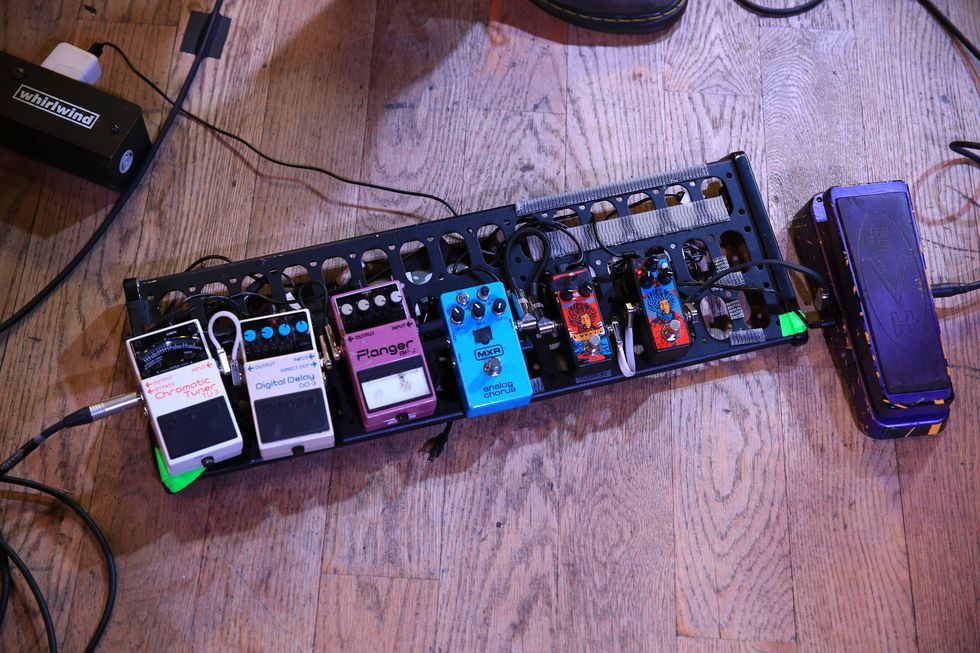









 Zach loves his Sovtek Mig 60 head, which he plays through a cab he built himself at a pipe-organ shop in Denver. Every glue joint is lined with thin leather for maximum air tightness, and it’s stocked with Celestion G12M Greenback speakers.
Zach loves his Sovtek Mig 60 head, which he plays through a cab he built himself at a pipe-organ shop in Denver. Every glue joint is lined with thin leather for maximum air tightness, and it’s stocked with Celestion G12M Greenback speakers.






